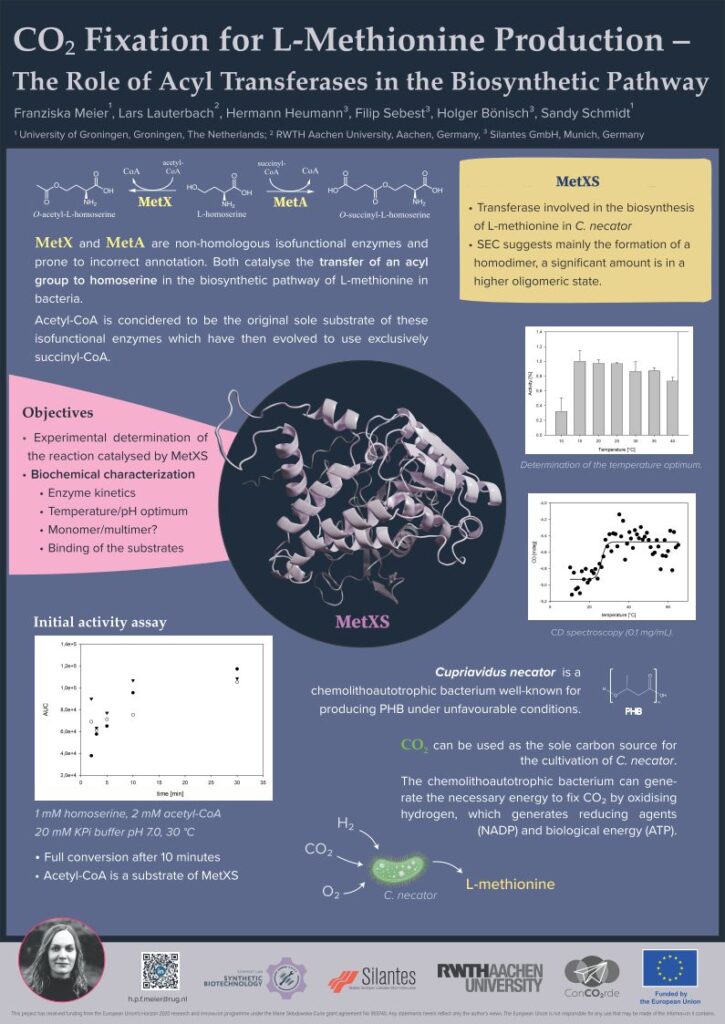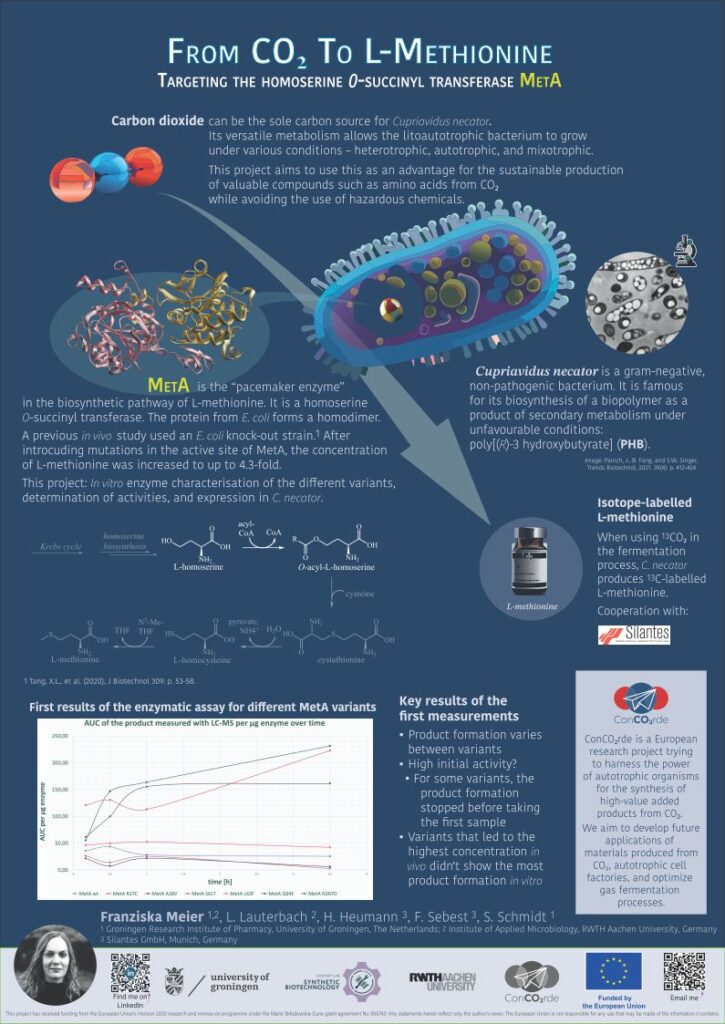The biotechnological production of L-methionine cannot yet compete with the commonly used chemical synthesis resulting in a mixture of DL-methionine. Unlike the other amino acids, methionine can be applied in racemic form as a feed additive, since mammals harbour a methionine racemase. Therefore, the market for biotechnologically produced L-methionine is small, but there are several advantages of the biotechnological production of L-methionine in Cupriavidus necator.
In contrast to the classical chemical synthesis of DL-methionine, the biotechnological production of methionine does not require hazardous and volatile chemicals and damages to the environment can be prevented. Furthermore, by using C. necator for the production and utilizing its chemolithoautotrophic metabolism, the greenhouse gas CO₂ can be directly converted into the desired product. Since CO₂ can be the sole carbon source for C. necator, 13C labelled L-methionine can be obtained via this approach. There is a demand for isotope-labelled L-methionine, which is used in metabolism studies and other applications, thus it is a compound of high value.
The aim of ESR2 is to obtain an L-methionine overproducing Cupriavidus necator strain. An efflux system has been identified and investigated, suitable homoserine O-succinyl transferases (MetA from E. coli) have been characterized and positive effector proteins (MetR) of the methionine synthetases MetE and MetH have been identified. The generation of knock-in/knock-out strains should lead to the overproduction of L-Met, which in turn leads to the production of 13C-labelled L-Met.
Key results
Different C. necator strains were generated expressing MetA (homoserine O-succinyltransferase from E. coli) or (L-methionine efflux transporter) plasmid based. Mutants of C. necator were created in which the genes for one influx system of L-methionine (MetD) and the endogenous acyltransferase of C. necator (MetXS) were knocked out. The following strains were created: C. necator ∆MetX MetA and C. necator ∆MetD YjeH, and C. necator ∆MetX ∆MetD MetA YjeH. The resulting strains were screened for L-Met overproduction under heterotrophic and autotrophic conditions.
When grown under autotrophic conditions, we successfully confirmed the overproduction of L-Met for the strains mentioned above. These results suggest that the production of L-methionine under autotrophic conditions from CO₂ is possible in C. necator. As the titre of the obtained L-Met needs to be further increased by additional genomic modifications, the production of labelled L-Met could not be confirmed yet. However, the results obtained are promising, so the growth of the strains obtained using 13CO2 will be further attempted in future studies..


Please fiind all ConCO2rde publications and data (coming soon) at our ConCO2rde community at Zenodo:

